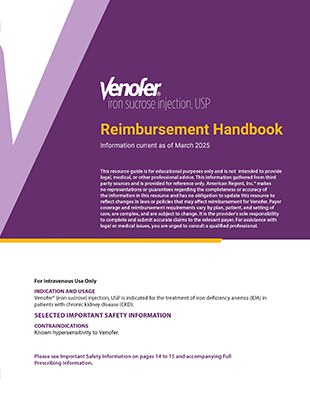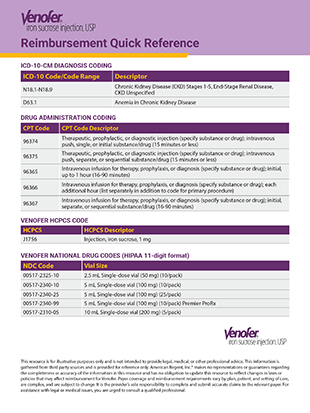A service to help providers understand payers’ coverage and reimbursement policies for Venofer®.
877-448-4766
Monday through Friday, from 8 am to 7 pm ET
Useful resources for AR Assist

Venofer Reimbursement Handbook
This guide provides helpful information about general coverage, coding, and reimbursement to help providers understand the policies of the Medicare program and other third-party payers.

Venofer Reimbursement Quick Resource
A handy quick guide that provides specific coding for diagnosis and administration as well as HCPCS and NDC codes for Venofer.
HCPCS=Healthcare Common Procedure Coding System; NDC=National Drug Code.
To get started with a program, visit portal.ar-assist.com to enroll online.
Venofer® and the Venofer logo are registered trademarks of Vifor (International) Inc., Switzerland.
American Regent, the American Regent logo, AR Assist and the AR Assist logo are registered trademarks of American Regent, Inc. All rights reserved.
Venofer® is manufactured under license from Vifor (International) Inc., Switzerland.
PP-VE-US-0137 (v2.0)